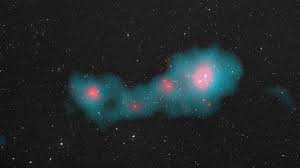Brahmastra Hypersonic Missile
- 13 Mar 2025
In News:
Indian scientists, under the Defence Research and Development Organisation (DRDO), have successfully developed and tested a hypersonic missile named Brahmastra, officially called the Long Range Anti-Ship Missile (LRAShM). It represents a major milestone in indigenous defence technology.
Key Features of Brahmastra (LRAShM)
- Type: Hypersonic glide missile
- Developer: DRDO
- Speed: Mach 10 (≈12,144 km/h) — 10 times the speed of sound
- Range: 1,500 km
- Flight Time to Target: Can destroy enemy warships within 7–8 minutes of launch
- Launch Platforms: Compatible with both land and naval platforms
- Technology:
- Scramjet propulsion and glide vehicle technology
- Advanced heat-resistant materials to withstand extreme thermal conditions
- Radar evasion and trajectory maneuverability, making interception extremely difficult
Strategic Significance
- Naval Superiority: Enhances India’s maritime strike capabilities, especially in the Indian Ocean Region (IOR).
- Counter to China: Outperforms China’s DF-17 missile, which has a shorter range (1,000 km).
- Quick Response: For instance, a warship near Pakistan’s Karachi port could be neutralized within 4–5 minutes from India’s western coastline.
- Technological Benchmark: Establishes India’s lead in scramjet and hypersonic glide vehicle technology.
Comparative Edge Over Global Counterparts
- China's DF-17: Also hypersonic (Mach 10) but limited to a 1,000 km range.
- U.S. Programs: Still under testing; India’s successful deployment marks it as a front-runner in this emerging domain.
- Strategic Camouflage: Experts speculate India may have publicly understated the missile's actual capabilities for security reasons.
Antarctic Circumpolar Current (ACC) Slowing Down
- 12 Mar 2025
In News:
Recent scientific studies have revealed that the Antarctic Circumpolar Current (ACC)—the strongest and most powerful ocean current on Earth—is slowing down due to accelerated melting of Antarctic ice sheets caused by global warming.
What is ACC?
- The ACC flows clockwise around Antarctica and is the only ocean current that connects the Atlantic, Pacific, and Indian Oceans.
- It is five times stronger than the Gulf Stream and over 100 times more powerful than the Amazon River.
- Driven by strong westerly winds, it is the largest wind-driven ocean current and plays a vital role in regulating the Earth’s climate.
Key Functions and Significance
- Climate Regulation: Distributes heat, nutrients, and water across ocean basins.
- Carbon Sink: Aids in oceanic absorption of atmospheric carbon dioxide, mitigating global warming.
- Marine Barrier: Acts as a natural wall preventing invasive species (e.g., bull kelp, mollusks, shrimp) from reaching Antarctica.
- Prevents Warm Water Intrusion: Helps keep warm ocean currents away from the fragile Antarctic ice shelves.
Findings from Recent Research
- A study by the University of Melbourne and NORCE Norwegian Research Centre, published in Environmental Research Letters, warns that the ACC could slow down by 20% by 2050 under high emissions scenarios.
- Researchers used high-resolution ocean and sea ice simulations on Australia’s GADI supercomputer to project these changes.
- The weakening is largely attributed to the freshwater input from melting ice, which alters ocean salinity and disrupts the formation of Antarctic Bottom Water (AABW)—a crucial component of global ocean circulation.
Reasons for ACC Weakening
- Freshwater Dilution: Melting ice reduces salinity, weakening the density-driven AABW circulation.
- Altered Wind Patterns: Climate change may shift westerly wind patterns that drive the ACC.
- Positive Feedback Loop: Reduced sea ice further warms oceans, accelerating ice melt and weakening the current further.
Potential Global Impacts
- Climate Extremes: Disruption in global heat distribution may lead to increased climate variability and extreme weather events.
- Accelerated Global Warming: Slower circulation reduces the ocean’s carbon sequestration capacity.
- Biodiversity Threats: Invasive species could reach Antarctica, disrupting native ecosystems and food chains (e.g., penguins and krill).
- Global Ocean Circulation Impact: AABW weakening may disrupt the thermohaline circulation affecting global ocean systems.
Quipu Superstructure

- 13 Feb 2025
In News:
Astronomers have discovered the largest known cosmic structure, named Quipu, in a study led by Hans Bohringer of the Max Planck Institute. The findings are part of efforts to map matter distribution in the universe using redshift data between 0.3 to 0.6, revealing some of the most distant known objects.
Key Features of Quipu:
Attribute Description
Type Superstructure (clusters of galaxy superclusters)
Length ~1.3 billion light-years (Over 13,000 times the Milky Way’s size)
Mass ~200 quadrillion (2 × 10¹?) solar masses
Components ~70 galactic superclusters
Shape Central filament with multiple branching filaments (named after the Incan “Quipu” cord system)
Cosmic Significance:
- Gravitational Lensing (GL): Due to its enormous mass, Quipu bends light from background objects, distorting sky images.
- Cosmic Microwave Background (CMB): Its gravitational field causes fluctuations in the CMB—the relic radiation from the Big Bang.
- Hubble Constant Impact: Quipu and similar structures distort measurements of the Universe’s expansion rate.
Scientific Context:
- Superstructures: Extremely large arrangements of matter including groups of galaxy clusters and superclusters.
- Quipu is hundreds of thousands of times more massive than a single galaxy.
- Discovered at a distance of 425 to 815 million light-years from Earth.
Other Superstructures Identified:
Alongside Quipu, astronomers identified four other massive structures:
- Shapley Supercluster
- Serpens-Corona Borealis Superstructure
- Hercules Supercluster
- Sculptor-Pegasus Superstructure
Together, these five structures:
- Contain ~45% of all galaxy clusters
- Include ~30% of galaxies
- Hold ~25% of the matter in the universe
- Occupy ~13% of the universe’s volume
Future Evolution:
- Scientists consider Quipu a "transient configuration".
- It is expected to break into smaller collapsing units in the future, altering cosmic structures over time.
